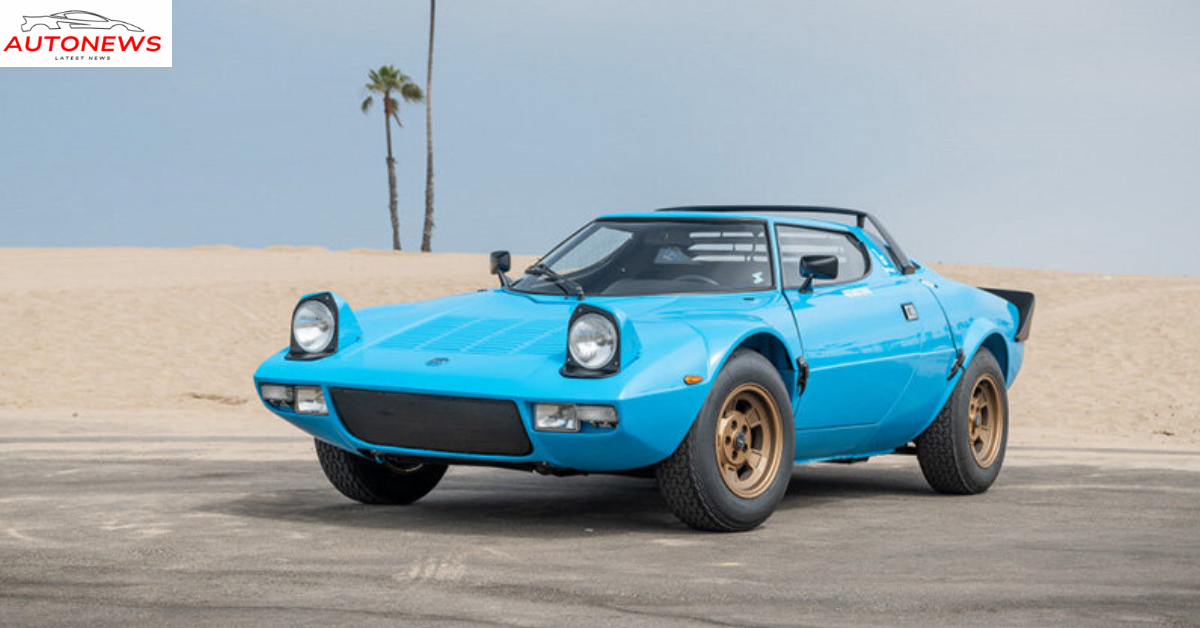In the world of rally racing, few cars have achieved the mythical status of the Lancia Stratos HF. With its radical design, fearless engineering, and unmatched rally pedigree, the Stratos HF didn’t just win races—it changed the sport forever. It was the first car built from the ground up specifically for rallying, and it still stands as one of the most iconic motorsport machines ever created.
A Car Designed for One Purpose: Victory
In the early 1970s, Lancia had already begun making a name for itself in rallying with models like the Fulvia. But as competition grew fiercer, it became clear that a purpose-built machine was needed. Enter the Stratos HF—or “High Fidelity”—which was engineered not to sell to the masses but to dominate in the dirt, snow, and tarmac of World Rally Championship (WRC) stages.
The story of the Stratos HF begins with a concept car: the Lancia Stratos Zero, designed by the famed Marcello Gandini at Bertone. The Zero’s spaceship-like appearance caught the attention of Lancia executives, and soon, the project evolved into a fully-fledged rally car. In 1973, the Stratos HF was unveiled, and it quickly proved to be far more than just a futuristic showpiece.
Mid-Engine Madness
One of the most groundbreaking features of the Lancia Stratos HF was its mid-engine layout. Lancia didn’t develop its own engine for the car; instead, it sourced the 2.4-liter V6 from the Ferrari Dino 246 GT. Producing around 190 horsepower in road-going versions and well over 280 horsepower in rally trim, this engine gave the Stratos razor-sharp throttle response and a snarling exhaust note that could echo through Alpine passes and forest stages alike.
The car’s short wheelbase and featherweight construction—around 980 kg (2,160 lbs)—made it incredibly nimble. On tight, twisty rally stages, it could dance like no other. It wasn’t easy to tame, though. Drivers often spoke of the Stratos as being a “wild animal,” always on edge, always challenging. But in the hands of a skilled driver, it was nearly unbeatable.
Dominance on the Rally Stage
The Stratos HF began its competitive life in 1974, and almost immediately, it was a force to be reckoned with. Under the guidance of the legendary Cesare Fiorio and piloted by drivers like Sandro Munari and Björn Waldegård, the car secured three consecutive WRC manufacturers’ titles in 1974, 1975, and 1976.
Its ability to handle diverse terrain was unmatched. Whether tearing through the icy roads of the Monte Carlo Rally, charging over the dusty paths of the Safari Rally, or powering through the winding tarmac of the Tour de Corse, the Stratos proved its versatility time and time again.
Even after Lancia officially pulled factory support in favor of the Fiat 131 Abarth in the late ’70s, privateers continued racing the Stratos with surprising success into the early ’80s. It was that good.
Style Meets Substance
The Lancia Stratos wasn’t just fast—it was beautiful. Gandini’s wedge-shaped design was like nothing else on the road or rally course. With its wide stance, curvaceous fenders, and dramatic wraparound windshield, it looked more like a concept car than a production vehicle. Yet beneath that sculpted fiberglass body was a brutal, uncompromising race machine.
Only about 492 examples of the Stratos were built to satisfy homologation rules, making it as rare as it is revered. Today, original Stratos HFs fetch high prices at auction, and they are coveted by collectors and enthusiasts worldwide.
Legacy and Revival
The impact of the Stratos HF on rallying and automotive design cannot be overstated. It set the template for purpose-built rally cars, and its success helped cement Lancia’s status as a motorsport powerhouse.
In the 21st century, the legend of the Stratos lives on. A limited-run modern reinterpretation, simply called the “New Stratos,” was developed by Italian design house Pininfarina in partnership with Manifattura Automobili Torino (MAT). Based on the Ferrari F430 Scuderia, it pays homage to the original with updated performance and styling, proving that the spirit of the Stratos still has fans and fuel today.
Conclusion
The Lancia Stratos HF was more than just a rally car—it was a revolution. It showed what was possible when a manufacturer set out to build a machine with one goal in mind: to win. Fast, beautiful, and utterly uncompromising, the Stratos didn’t just dominate its era—it became a lasting symbol of ingenuity, passion, and Italian automotive excellence.

